A&P unit 4 - sensory physiology
1/36
Earn XP
Description and Tags
Name | Mastery | Learn | Test | Matching | Spaced |
|---|
No study sessions yet.
37 Terms
What are the 3 ways sensory receptors can be categorized?
1) distribution - where found in body
2) stimulus origin
3) stimulus modality - stimulating agent
general sense receptors
-sensory category = distribution
-simple receptors all thru body
-includes somatic (skin, mucous membrane, propioreceptors) and visceral (in internal organs monitor pH, temp, pain)
special sense receptors
-sensory category = distribution
-complex receptors only found in head
-5 special senses - olfaction, gustation, vision, audition, equilibrium
exteroreceptors vs interoreceptors
-sensory category = stimulus origin
-extero - detect from external environ. → skin & special senses
-intero - visceral, detect from interal organs
propioreceptors
-sensory cateogory = stimulus origin
-detect limb mvmt of body → somatosensory neurons of muscles and joints
mechanoreceptor
-receptor category = stimulus modality
detect mechanical energy
thermoreceptor
-receptor category = stimulus modality
detect heat and cold
osmoreceptor
-receptor category = stimulus modality
detect changes in solute concentration of body fluid
chemoreceptor
-receptor category = stimulus modality
detect specific chemicals → smell, taste, O2 lvls in blood
nociceptors
-receptor category = stimulus modality
detect pain. sensitive to tissue damage
sensory process when sensor is connected to neuron
-normal AP process
→ chem Na opens, lead to VG opening, to AP
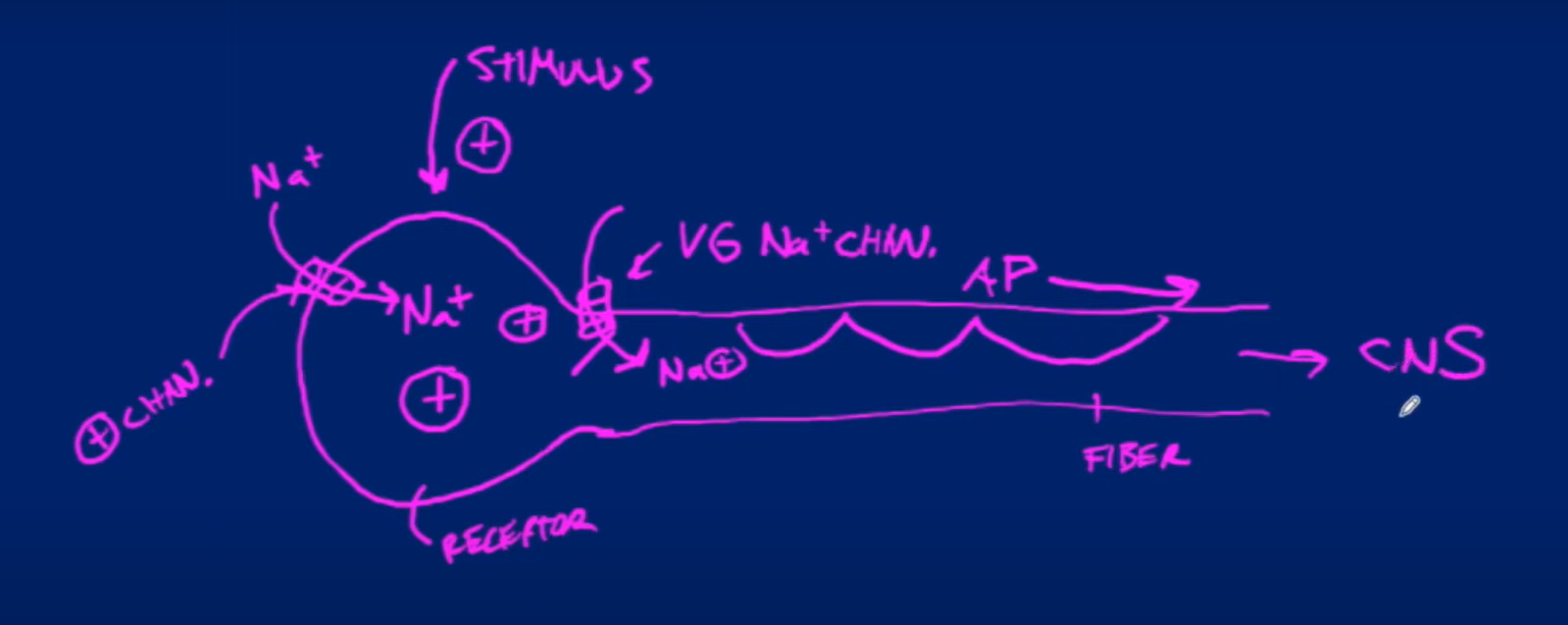
sensory process in a separate cell close to neuron
-stimulus activates Na influx (chem gated), depolarizes
-this opens VGC Ca channels
-Ca channels allow NT exocytosis
-NT goes to neuron, opens chem gated then VG gated Na, AP
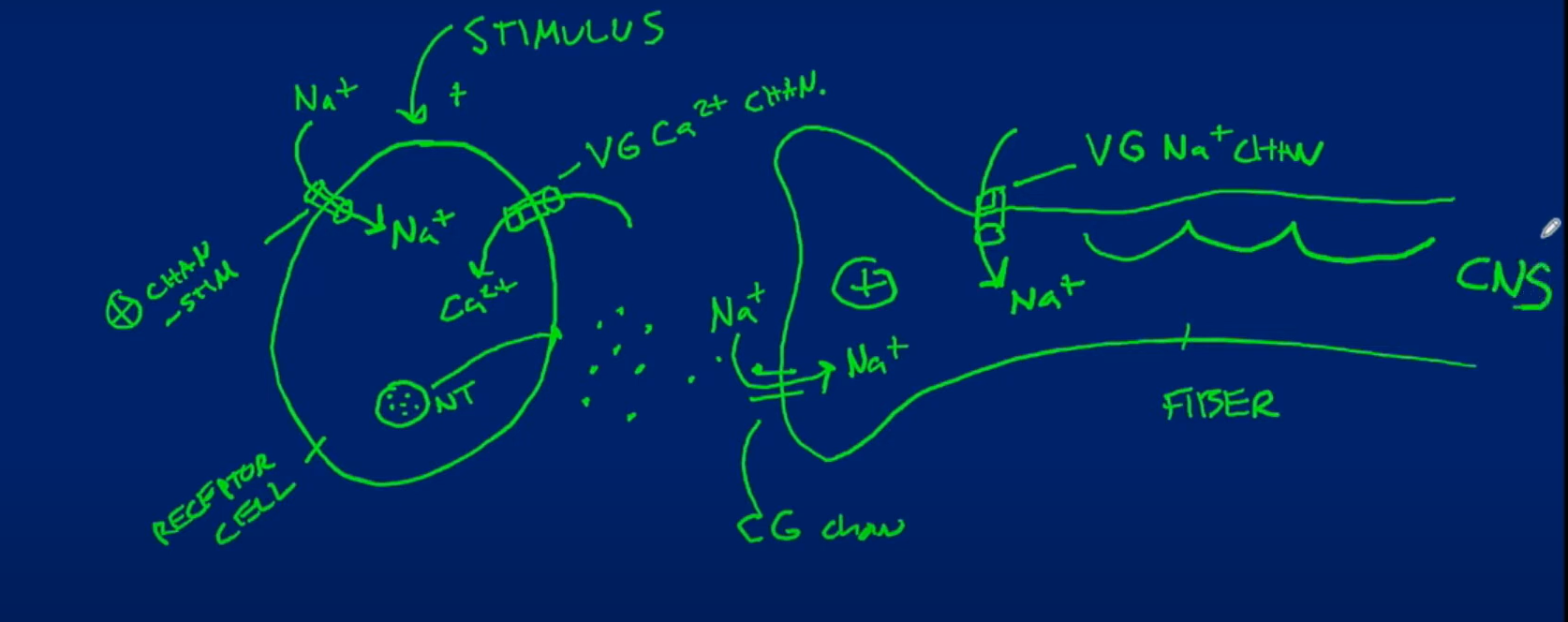
What are the 4 things sensory neurons are responsible for sending to CNS
1) modality = type of stimulus
2) stimulus location
3) stim. intensity
4) stim. duration
sensory neuron modality
-what is stimulus? type of stimulus
-ex. temp vs touch stimulus
-based on labeled line = specific type of receptor sends to specific region in CNS
sensory neuron generic pathway
1) sense receptor activated on 1° sense neuron → GP → AP
2) 1° neuron synapses to 2° neuron in spinal cord or brain stem
3) 2° neuron synapses to 3° neuron in thalamus
4 3° neuron synapses to 4° neuron in specific area of cerebrum
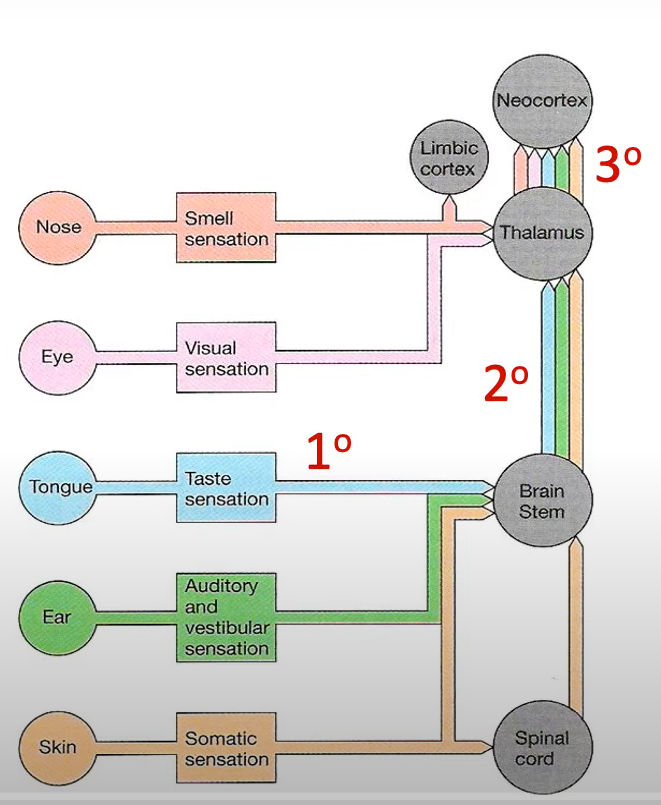
receptive field
specific region (of skin) where a stimulus can activate a sensory neuron
-higher density = smaller RF size (many RFs packed into one spot, so they’re small but packed together)
How does receptive field density influence acuity?
-acuity = ability to sense/differentiate a signal
-more small dense RFs = higher acuity, lower discriminatory distance
-aka dense can detect more
(in the image, 1&2 detect 2 diff stim, but 3 is so big that 2 diff stim get detected as being in the same area)
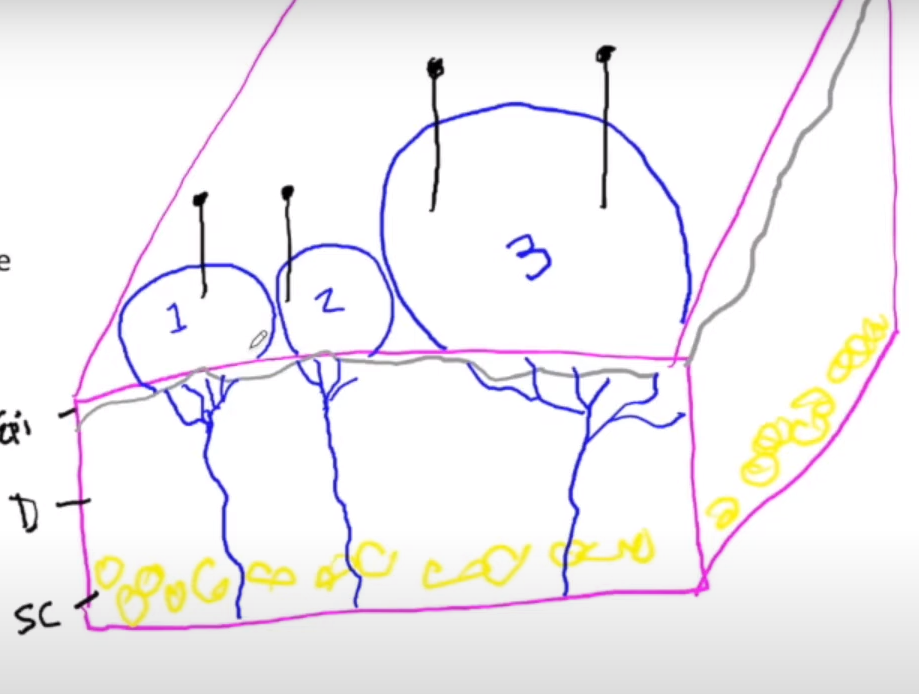
How does detecting stimulus intensity work?
-intensity = # of receptive fields detected, determined by frequency sent to CNS
↑ stim strength = ↑ receptor/graded potential
↑ receptor potential = ↑ AP frequency (NOT strength)
↑ frequency = ↑ NT release = greater effect
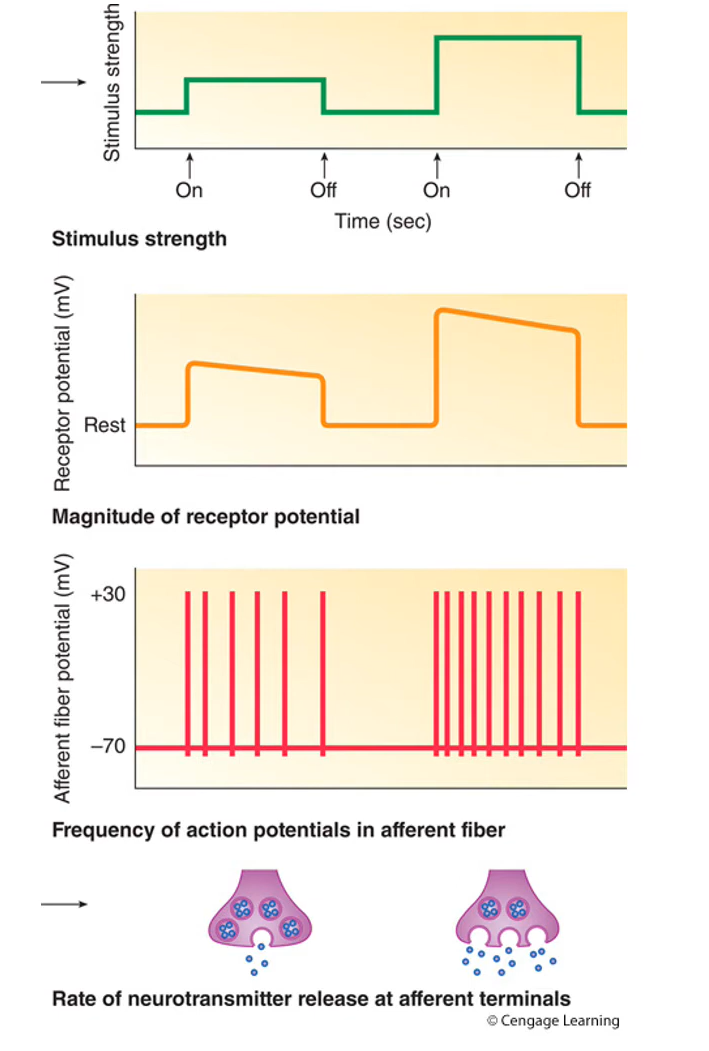
localized vs widespread pressure
local = only few receptive fields activated
widespread = more receptive fields activated
→ more RFs = more intensity
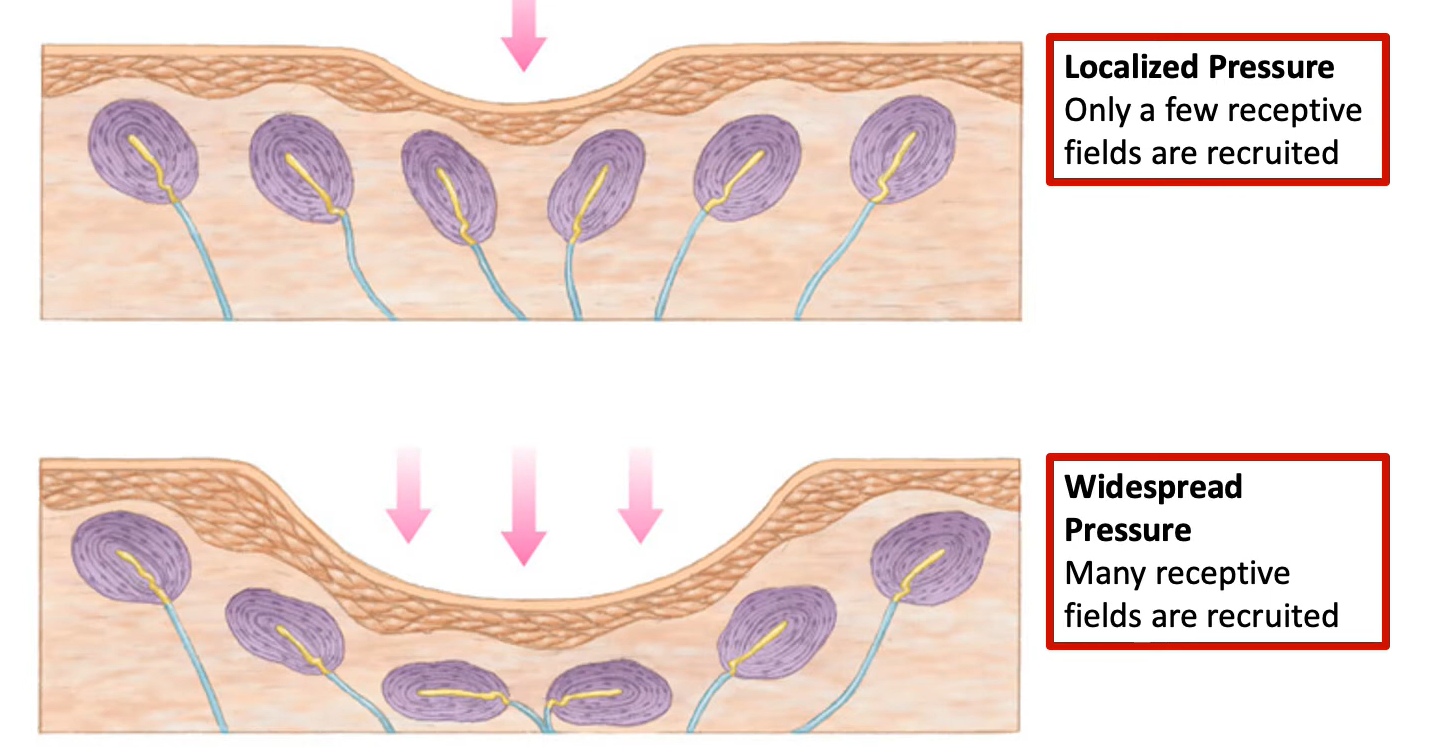
adaptation (duration)
all receptors get less sensitive to a constant stimulus over time
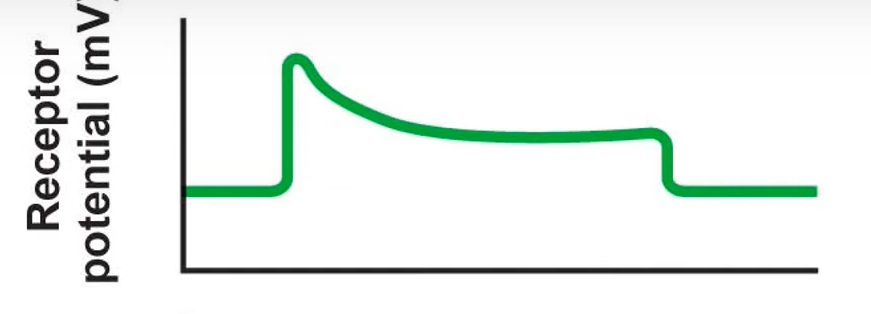
tonic receptor
-limited adaptation, signal stays mostly the same
-pain receptors, head position receptors in inner ear
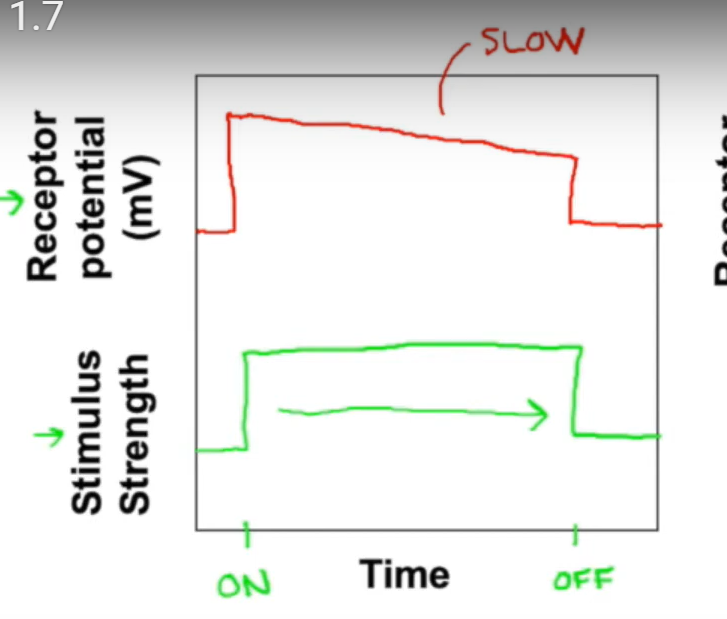
phasic receptor
-adapt rapidly to stimulus
-pressure receptors
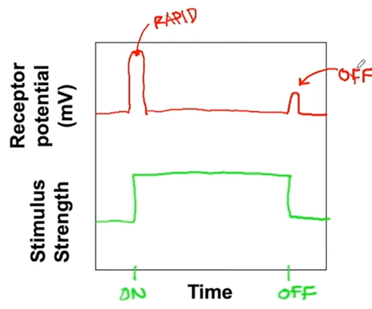
tactile receptors
touch receptors
-most common, found in skin
-can be encapsulated or unencapsulated
free nerve endings
-unencapsulated tactile receptor
-closest to skin surface. simplest
-phasic or tonic
-sense temp or pain
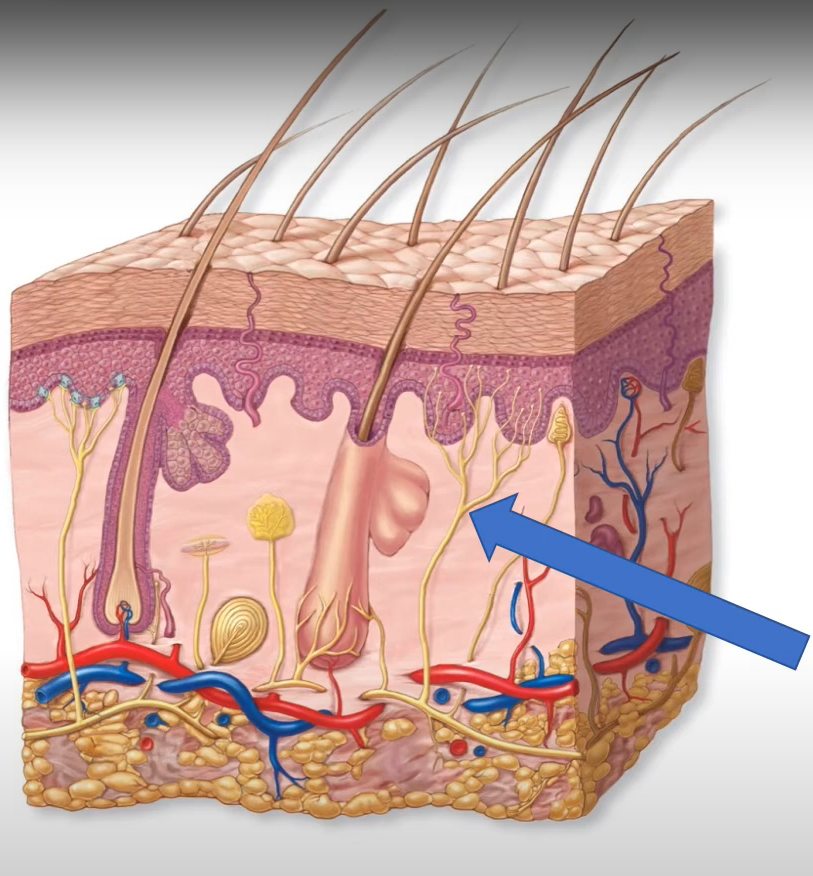
hair receptor
-unencapsulated tactile receptor
-wrap around hair fibers
-phasic
-sense hair mvmt
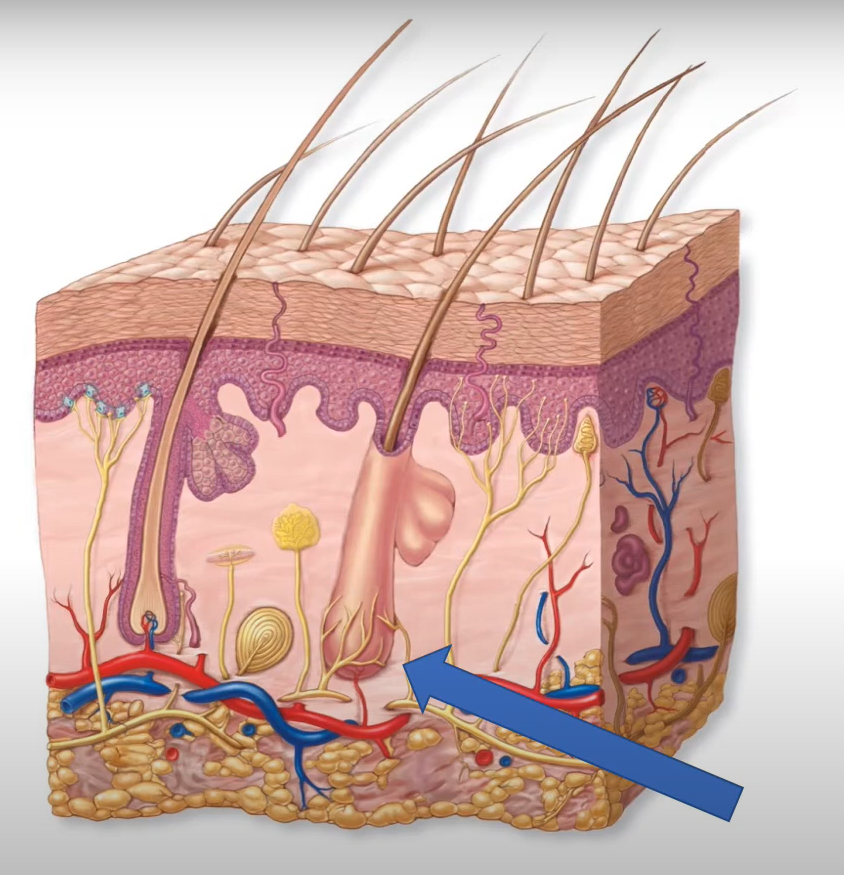
Merkel’s disc
-unencapsulated tactile receptor
-tonic
-light, sustained touch/texture
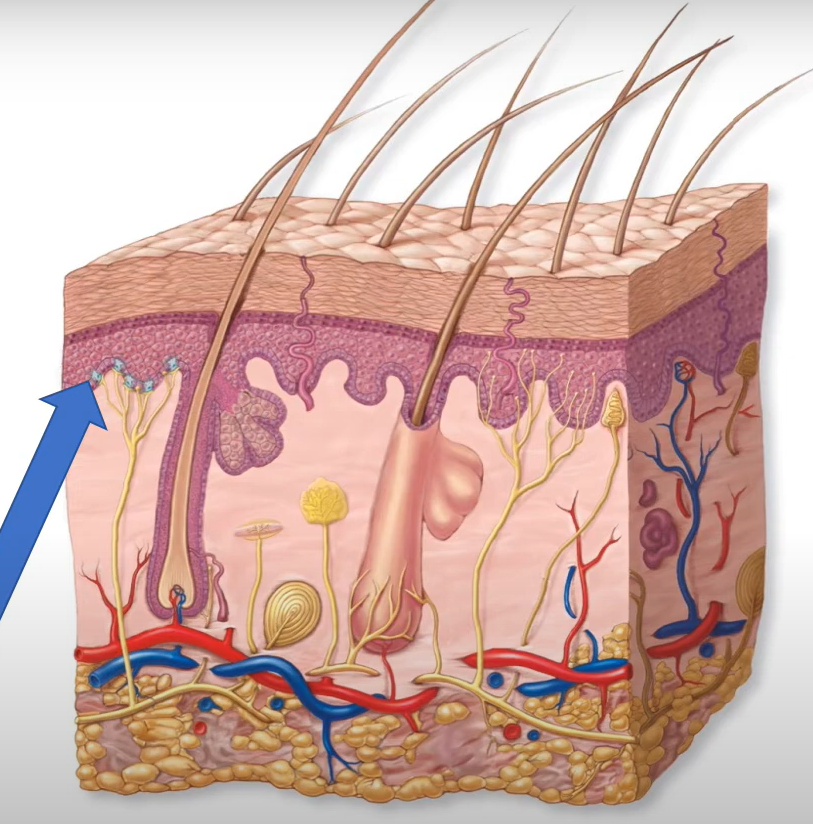
Pacinian corpuscles
-encapsulated tactile receptor
-phasic
-deep pressure and vibration
-they are wrapped in connective tissue layers
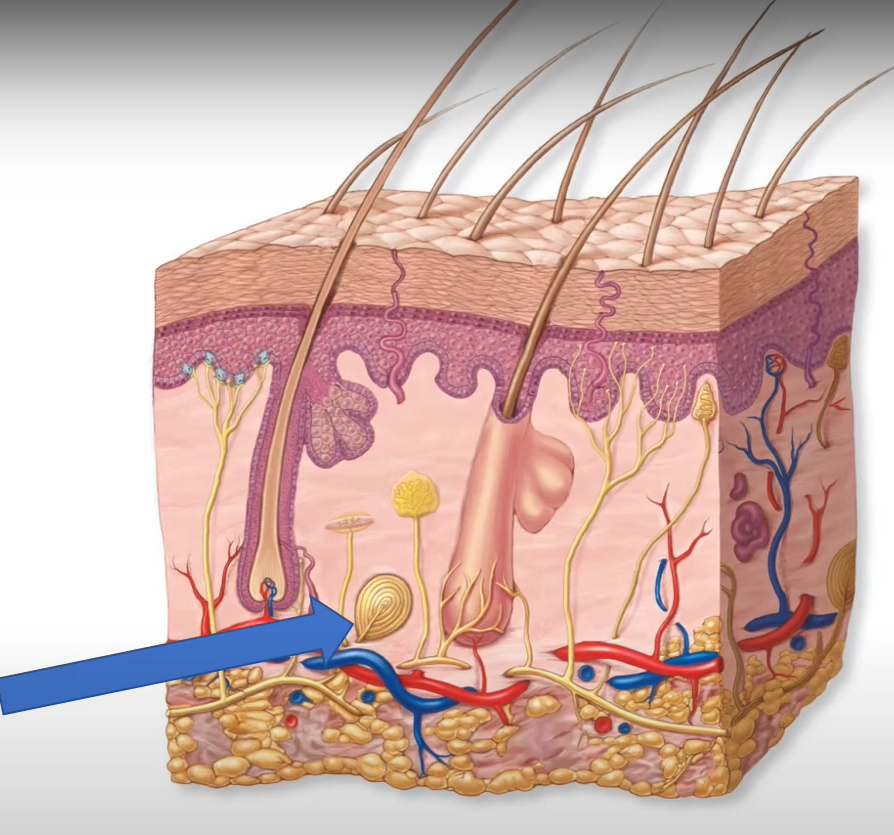
Ruffini endings
-encapsulated tactile receptor
-tonic
-deep sustained pressure or stretch of skin
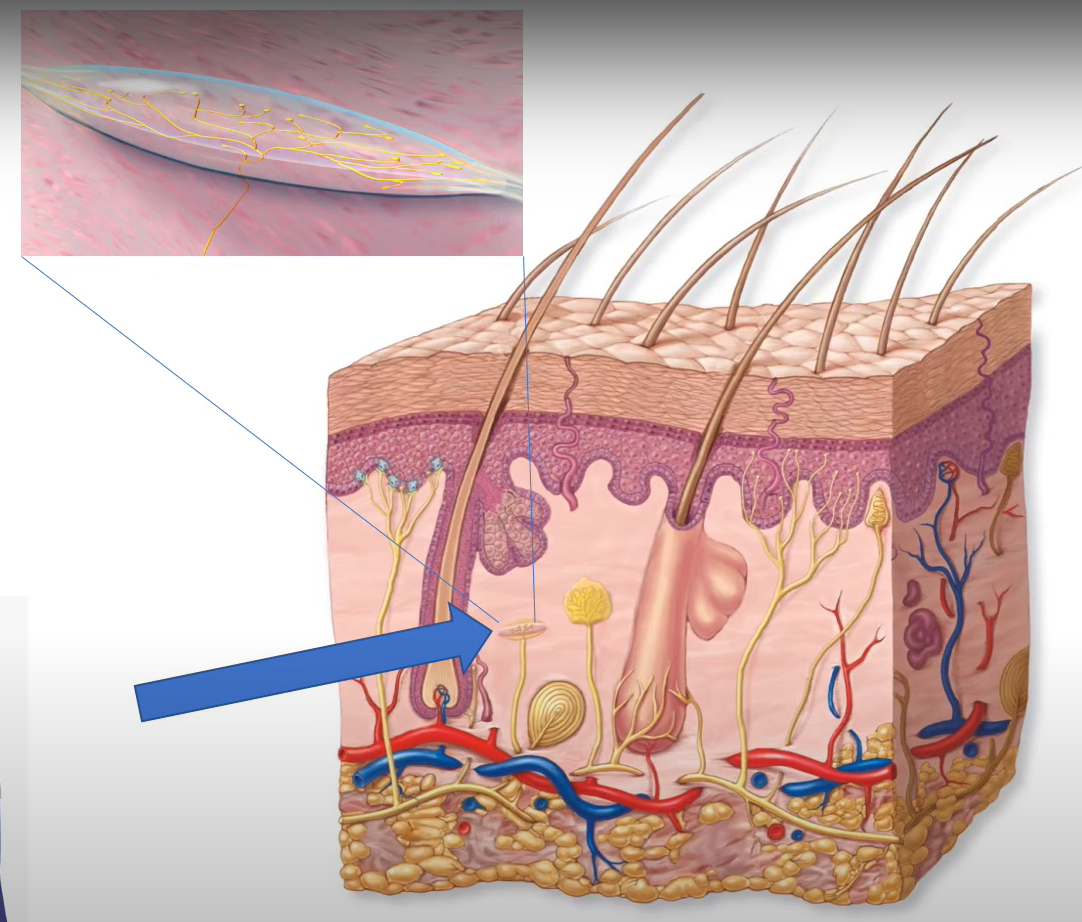
Meissner’s corpuscle
-encapsulated tactile receptor
-phasic
-light fluttering touch
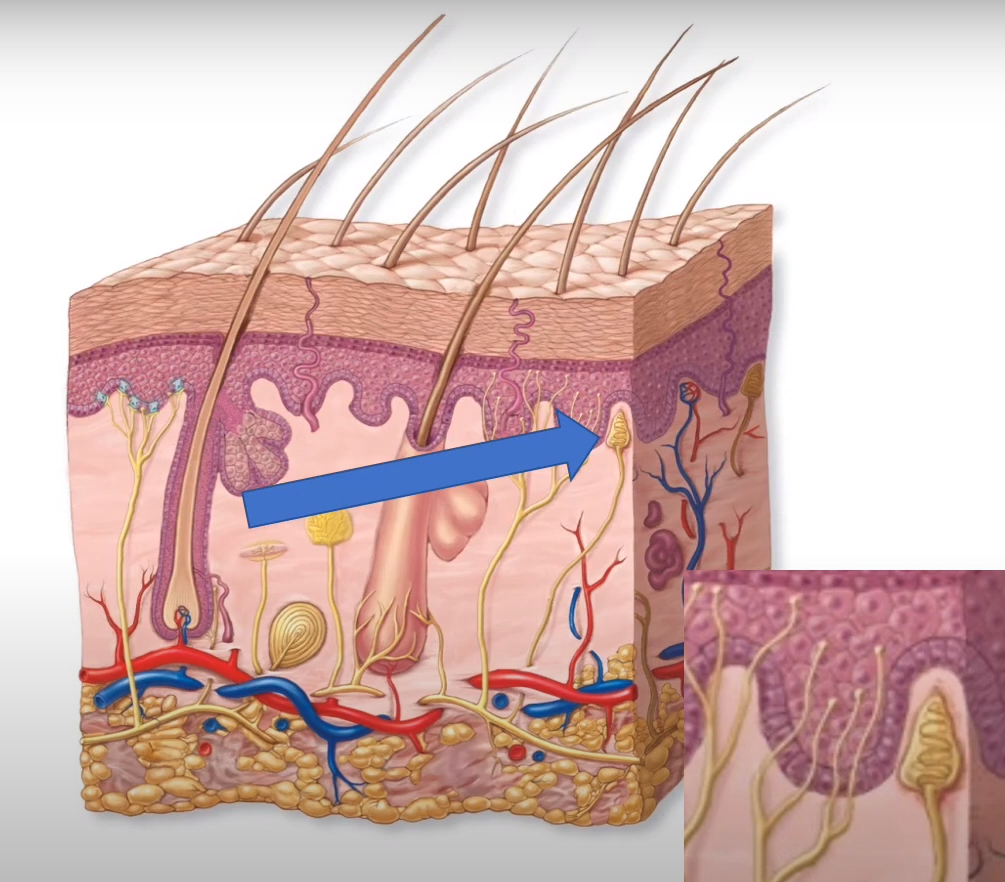
sensation vs perception
sensation = stimuli act on body, receptors move it to CNS
perception = CNS interprets signals consciously
perception is not the same as sensation
How is stimuli detection imperfect?
-limited detection range
-cerebrum further manipulates sensory data → fills in info
-precortical processing (features of stimuli can be accentuated or repressed → lateral inhibition)
lateral inhibition
-happens via inhibitory neurons → blocks out stimuli around the main receptor, so only signal from the main receptor goes thru
-allows for better identification of where the stimulus comes from
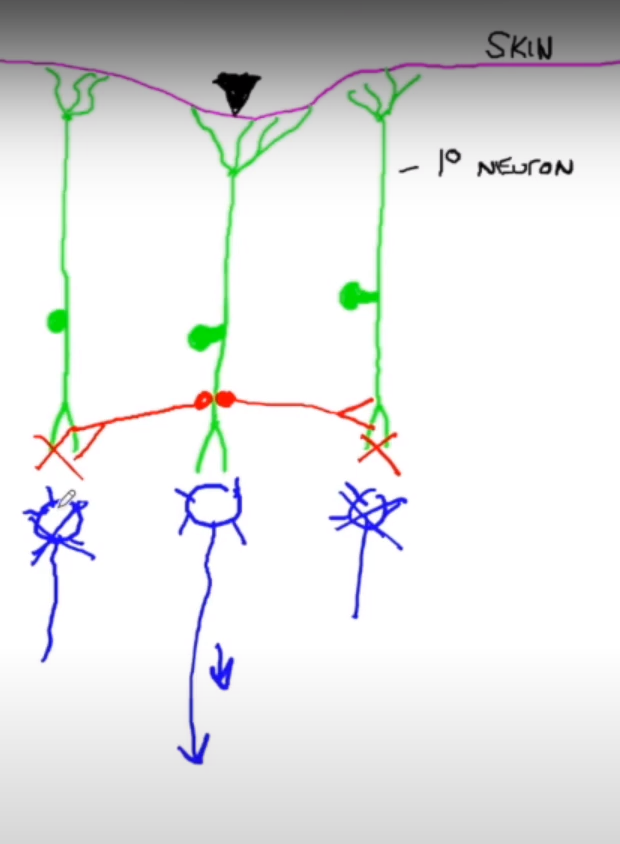
3 types of nociceptors
-mechanical = cutting, crushing, pinching
-thermal = temp extreme change
-polymodal =respond to any dmg, including chemicals released from dmged tissues (histamine, bradykinin)
compare fast and slow pain
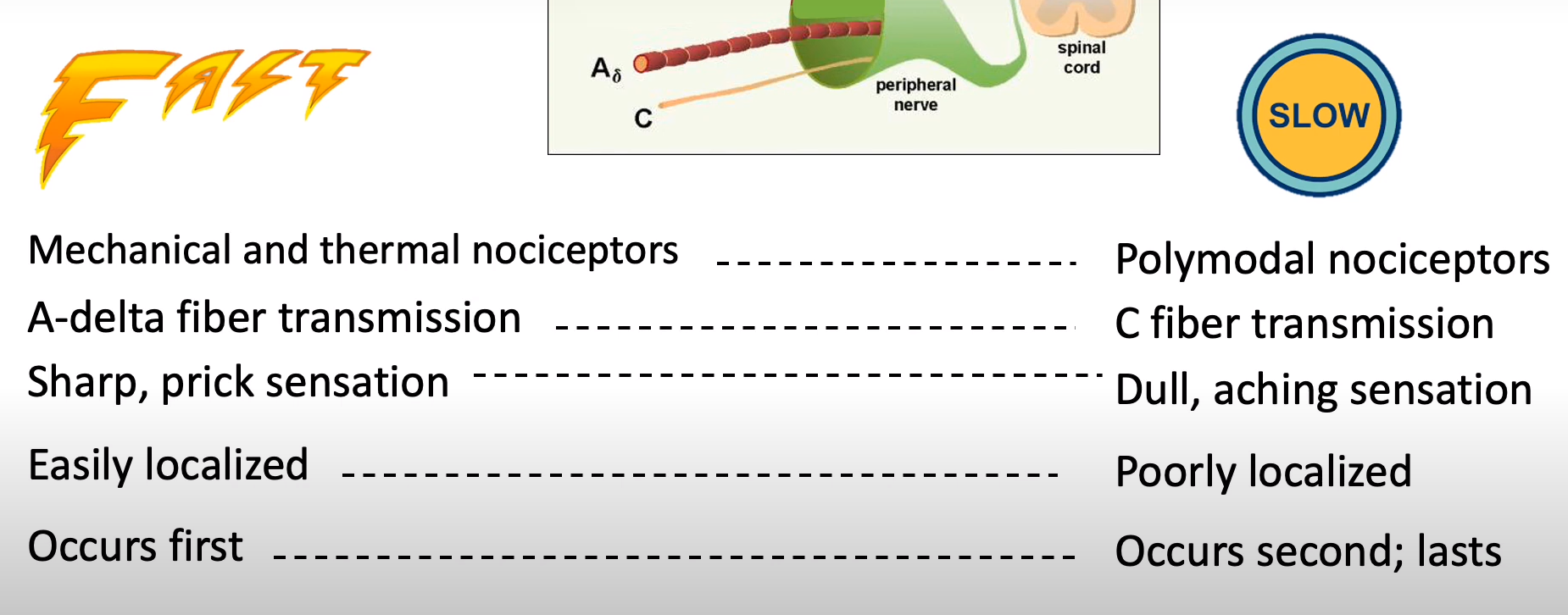
decussation
-nociceptor pain signal switches sides (signal felt on left hand gets sent to right part of brain)
-happens at spinal cord (2° neuron)
substance P pain pathway
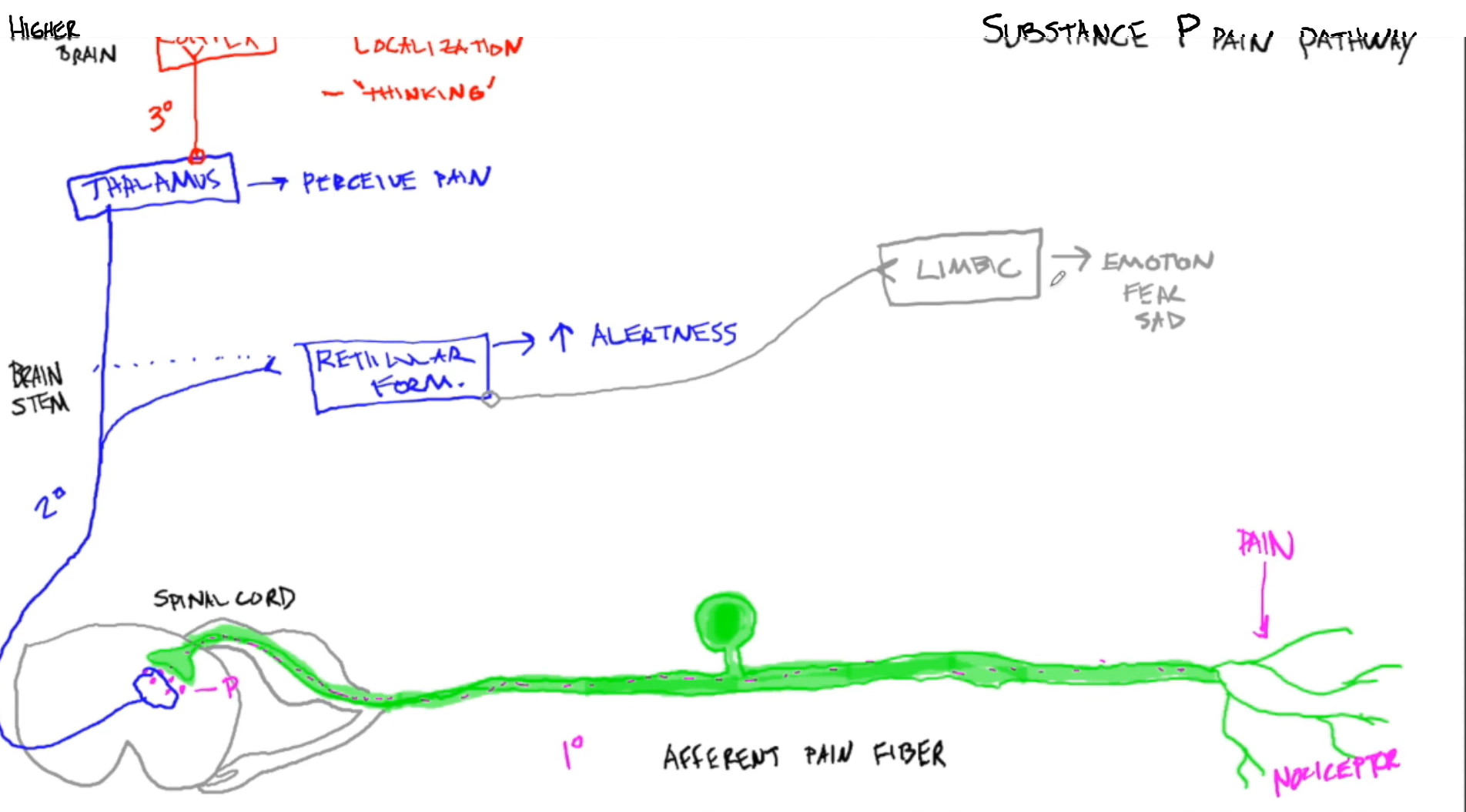
neurotoxins - 3FTx
“3 finger neurotoxin”
ACH antagonist, binds to ACH receptors. Without ACH, cannot control muscle contraction
→ lead to paralysis and death if untreated